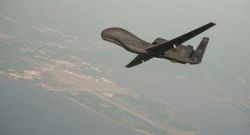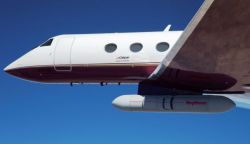US Navy, Raytheon Develop Electronic Attack Payload For UAVs

US Navy scientists and the Raytheon have tested their newly developed electronic attack system, CERBERUS, which can be carried on a Miniature Air Launched Decoy-Jammer (MALD-J).
Both have jointly demonstrated captive flights of modular, rapid replacement architecture for electronic warfare (EW) payloads on the air-launched unmanned decoy vehicle.
The four separately developed EW payloads were used in 12 operationally relevant missions, the company announced Wednesday.
Every interchangeable payload was customized for a specific mission and threat. Further, it was exchanged onto the captive carry vehicle within a minute.
The company borrowed technology from IndyCar, or US independent auto racing league, technology to create "swappable" mission capabilities.
"The CERBERUS design is cost-effective and expands MALD capabilities to address new missions and target sets. It's a sensible approach for mitigating payload obsolescence," Naval Research Laboratory Electronic Warfare Strategic Planning Organization head Jeff Heyer said.
Raytheon has carried out four-year program with US Pacific Command and Naval Air Systems Command to develop a payload system that could operate with a rapid interchange structure.
The new system is designed for fast adaptability in the rapidly evolving electronic attack battle space.
CERBERUS adapted the half-turn quick lock developed by Dallara, which produces racing cars. Further, the design was altered to meet aerospace form factors and environmental requirements, Heyer added.
MALD-J is in full rate production for the US Air Force. The US Navy is evaluating development of MALD-N in the near future to conduct stand-in-jamming for their missions.










